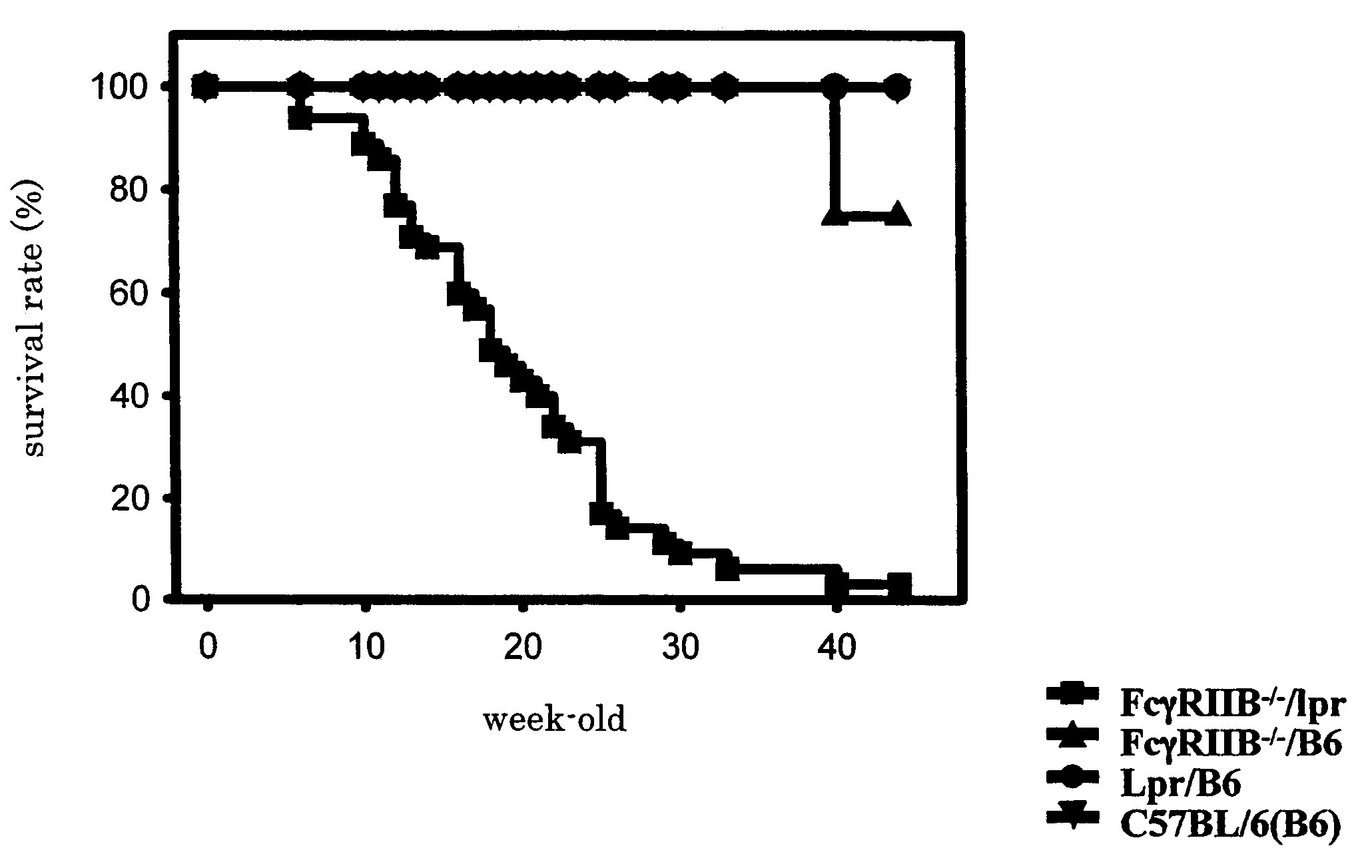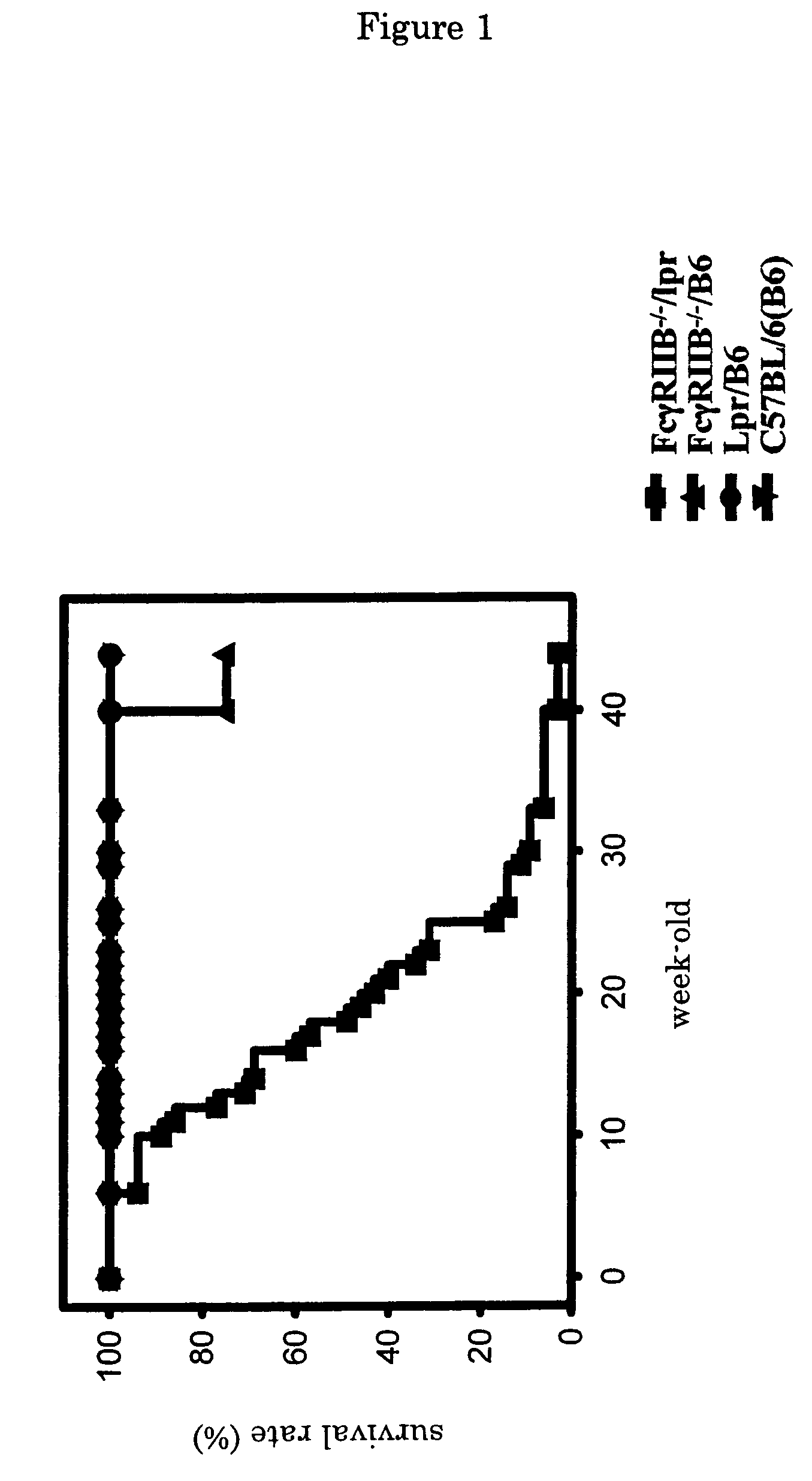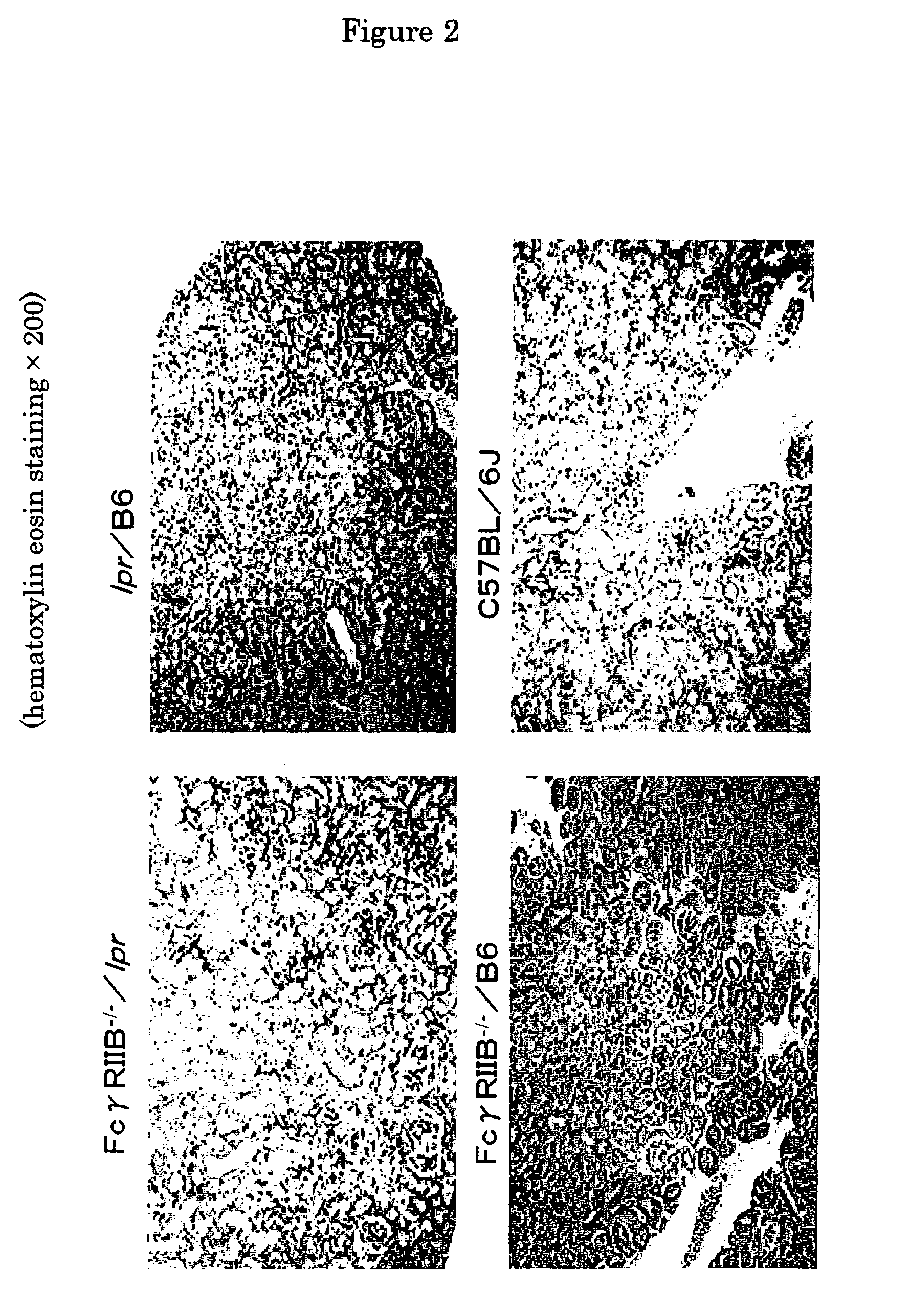Non-human animal model of systemic lupus erythematosus
a systemic lupus erythematosus, non-human animal technology, applied in the direction of immunological disorders, drug compositions, peptides, etc., can solve the problems of autoimmune disorders, and achieve the effects of severe systemic lupus erythematosus, significant anti-dna antibody titer, and enhanced antibody respons
- Summary
- Abstract
- Description
- Claims
- Application Information
AI Technical Summary
Benefits of technology
Problems solved by technology
Method used
Image
Examples
example 1
Generation of FcγRIIB Deficient lpr / B6 Mice
[0028]The above-mentioned FcγRIIB deficient mouse was backcrossed into a C57BL / 6J mouse (B6) which is a haplotype H-2b for 12 generations to generate an FcγRIIB deficient B6 mouse. The FcγRIIB deficient B6 male mouse was intercrossed with an Lpr / B6 female mouse to generate a FcγRIIB+ / − / lpr+ / − mouse wherein both genes are heterozygous. The FcγRIIB+ / − / lpr+ / − mice were further crossed each other to generate a FcγRIIB deficient lpr / B6 mouse. Discrimination of the FcγRIIB deficient lpr / B6 mouse was conducted by PCR method regarding Lpr and FcγRIIB deficiency. Lpr was discriminated by PCR method with the use of primers 5′-agcatagattccatttgct-3′ (Seq. ID NO. 1; P1) and 5′-caaattttattgttgcgaca-3′ (Seq. ID NO. 2; P2); wild-type (B6) was discriminated with primers 5′-agcatagattccatttgct-3′ (Seq. ID NO. 3; P3) and 5′-agtaatgggctcagtgca-3′ (Seq. ID NO. 4; P4). In the same manner, FcγRIIB deficiency was discriminated by PCR method with the use of 5′-ctc...
example 2
Abnormality of FcγRIIB Deficient lpr / B6 Mice
[0029]In order to examine morphological abnormality of newborn FcγRIIB deficient lpr / B6 mice (FcγRIIB− / − / lpr), they were compared with FcγRIIB deficient B6mice (FcγRIIB− / − / B6), Lpr / B6 mice (Lpr / B6), or C57BL / 6J mice (C57BL / 6J (B6)), and their survival rates were examined (30 mice for each type). The results are shown in FIG. 1. Based on the results, it was verified that in FcγRIIB deficient lpr / B6 mice, deaths were observed at 6-week-old in the earliest case, then the survival rate was drastically lowered week by week. The average lifetime of the FcγRIIB deficient lpr / B6 mice was approximately 20-week-old, and their survival rate became approximately 0% at 40-week-old. Further, there was sex difference in the survival rate, and female mice died at earlier stage. On the contrary, no mouse died before 40-week-old in other three strains.
example 3
Spontaneous Development of Glomerulonephritis and Arthritis in FcγRIIB Deficient lpr / B6 Mouse
[0030]Next, for the purpose of histopathological investigation of FcγRIIB deficient lpr / B6 mouse, FcγRIIB deficient lpr / B6 mice (FcγRIIB− / − / lpr), FcγRIIB deficient B6 mice (FcγRIIB− / − / B6), Lpr / B6 mice (Lpr / B6), and C57BL / 6J mice (C57BL / 6J) which were generated according to the method described in Example 1 were etherized and killed, and their specimen of kidney (FIGS. 2 and 3) and foot joint (FIGS. 4 and 5) were stained with hematoxylin and eosin, and visualized, respectively. The results are shown in FIG. 2 to 5, respectively. Meanwhile, FIG. 2 shows the kidney specimen of each 24-week-old mouse visualized at 200-fold magnification, FIG. 3 shows the kidney specimen of 24-week-old each mouse visualized at 400-fold magnification, FIG. 4 shows the foot joint specimen of 24-week-old each mouse visualized at 40-fold magnification, and FIG. 5 shows the foot joint specimen of 24-week-old each mous...
PUM
| Property | Measurement | Unit |
|---|---|---|
| antibody titer | aaaaa | aaaaa |
| resistance | aaaaa | aaaaa |
| antinuclear antibody titer | aaaaa | aaaaa |
Abstract
Description
Claims
Application Information
 Login to View More
Login to View More - R&D
- Intellectual Property
- Life Sciences
- Materials
- Tech Scout
- Unparalleled Data Quality
- Higher Quality Content
- 60% Fewer Hallucinations
Browse by: Latest US Patents, China's latest patents, Technical Efficacy Thesaurus, Application Domain, Technology Topic, Popular Technical Reports.
© 2025 PatSnap. All rights reserved.Legal|Privacy policy|Modern Slavery Act Transparency Statement|Sitemap|About US| Contact US: help@patsnap.com



